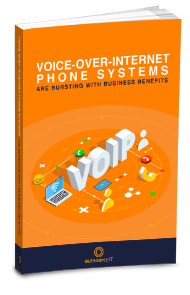Nowadays, it’s uncommon for many people to use phones that don't have caller ID. Caller ID lets people see the information of the caller such as the name and/or phone number, whether the call is being made on a mobile device, Voice over Internet Protocol (VoIP) system, or landline. It's a useful feature that allows you to screen calls and make sure you only answer those that are from people you know or numbers that you recognize.
But what happens when the information on your caller ID seems different from what it regularly displays? If you encounter this problem with any of your devices, it's possible that the caller ID is being spoofed and that a scam is afoot.
What is caller ID spoofing?
Caller ID spoofing is the practice of disguising the information that appears on the receiver's caller ID screen, to make it appear different from the actual calling number. This practice has become more and more popular with scammers because it allows them to disguise who they are and deceive people into answering their calls.
One of the most common instances of caller ID spoofing is when a person or company falsifies their number and makes it look like the number is coming from a legitimate business or government agency. For example, scammers may mask their phone numbers to make it appear as though they are calling from the Internal Revenue Service, Social Security Administration, or other similar recognizable entities. In these cases, scammers are trying to get the victims to provide personal information or money.
Caller ID spoofing doesn't just put the receiver in trouble but also the spoofed entity. To illustrate, a person who falls for a call purportedly from the IRS could blame the tax agency for making them pay back taxes that they don't actually owe.
If you believe you've been victimized by a caller ID spoofing scam, you can report it to the Federal Communications Commission.
Are all caller ID spoofing bad/illegal?
No. Caller ID spoofing can also be used for legitimate purposes.
Many businesses resort to spoofing and hide their information to protect their customers from threats or scams. Similarly, doctors/healthcare professionals may also use spoofing for legitimate (i.e., legal) purposes. For example, a doctor may call a patient from a personal mobile phone, which shows the clinic or office number instead of the doctor's personal phone number. This is to ensure that the doctor’s mobile number remains private.
On the other hand, malicious actors may use caller ID spoofing for illegal acts. Per the Truth in Caller ID Act, it is illegal to "transmit misleading or inaccurate caller ID information with the intent to defraud, cause harm or wrongly obtain anything of value. Anyone who is illegally spoofing can face penalties of up to $10,000 for each violation."
How to avoid caller ID spoofing
There are a few steps you can take to avoid becoming a victim of spoofing.
- Be careful when answering the phone or returning unknown numbers. If you don't recognize the number, never give out any personal information.
- Use call-blocking services like Nomorobo or First Orion. These services work by monitoring incoming calls for suspicious activity, such as scammers who use a fake caller ID, and protecting you from unwanted and illegal calls.
- Use a reverse lookup service to make sure the number is legitimate. These services allow you to search for a phone number and see if it has been reported as part of a scam or spoofing activity.
- Enable the spam phone call filter on your iPhone or Android device.
Download our FREE eBook, Voice-over-Internet Phone Systems Are Bursting With Business Benefits
Upgrade to VoIP and enjoy the benefits of hi-tech telecom!
By taking these steps, you can help protect yourself from caller ID spoofing and potential scams. Get in touch with the IT experts of outsourceIT to learn how you can make the most out of VoIP solutions and keep your phone systems secure. Call or leave us a message.


